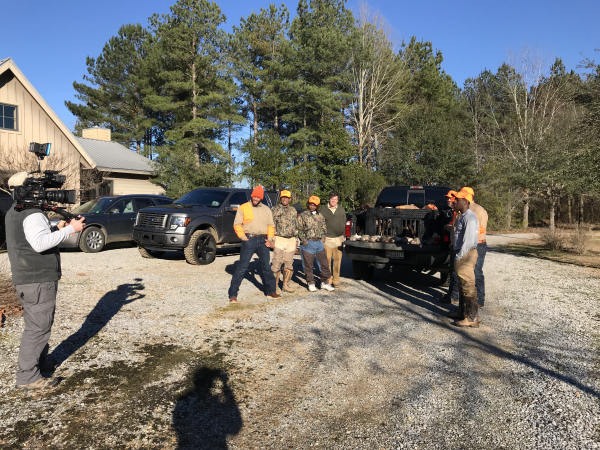Editor’s Note: Today’s feature first appeared in our companion service The Archery Wire.

This week’s editorial is dedicated to the ghoulish, the freaky and the wild – and I knew just the person to call – Scott Leysath, aka The Sporting Chef. With a third season of “Dead Meat” debuting on Sportsman Channel on Saturday, November 2 at 2 pm ET, Leysath is bringing the “less desirable” parts of critters to the forefront of your television screen. I’ll be honest, some of the stuff he touches I would never, in a million years, touch. For example, he once asked a southern gentlemen if he eats his raccoon “medium to medium well” and the guy looked at him like he was crazy and said “not unless you want Trichinosis,” which of course this person had contacted from eating undercooked ‘coon meat back in the ‘90s. He then described the hospital stay and it didn’t sound enjoyable. Racoon meat is a hard ‘no’ for me. However, I also know Leysath has been to a few amazing locations seeking folks who have caught and cooked game of all sorts like it is just another Tuesday. Luckily, I was able to grab Leysath in between returning from a Hunt.Fish.Feed. event in Boston last week and heading out to speak at the Denver Film Festival on November 5.
Q1: “Dead Meat” has been described as Anthony Bourdain meets “Swamp People” when it first debuted on Sportsman Channel a few years back. Is that still how you would describe season three? Or how has the show evolved since the first two seasons?
A1: We’re still on the hunt for the critters less hunted and eaten, connecting with folks who actually create dishes with them that are more or less edible. Our goal has always been to give our viewers a taste of what is considered good eats by various cultures. For instance, wrapping goat organs in goat stomach lining and binding with goat intestines might not sound great to many of us, OK…most of us, but the folks that served me “machito” in Texas hold it in high regard as exceptional table fare. It was worth a bite, but I don’t feel the need to try it again.

Q2: What was your favorite, odd or disgusting, critter to cook and/or eat from the show?
A1: The one I was surprised the most about were the Asian carp from the Illinois River near Peoria. We shot these flying carp with bows in a moving boat. Not a great percentage shot for a mediocre archer like myself. However, Dirk Fucik from Dirks’ Fish and Gourmet Shop in Chicago, ground them into fish cakes, bones and all. They were some of the best I’ve ever had. Yep. Carp cakes.
Q3: Since this is Halloween week, share with us the most unusual encounter you’ve had while filming for either “Dead Meat” or “The Sporting Chef.”

A3: It would have to be an episode that is coming up this season on “Dead Meat.” We visited Hawaii and hunted feral cows. Very surreal. Imagine chasing wild cows that are as spooky as deer or elk in the thick forest at about 6,000 feet elevation. These cows are mutts. One might have a brindle-colored head with one red ear, a beige body and two black legs. They’re lean, mean and hurdle over lava rocks, logs and anything else that gets in their way, including hunters. Do they taste like domestic beef? Well, you’ll have to watch the show, but these beasts don’t sit around a feedlot all day waiting for dinner. They have to work hard for it.

Q4: Ok, last thought – since this is also whitetail season – favorite venison dish to share with Archery Wire readers?
A4: What I cook at home is simple. I like my deer to taste like deer, not some powerful marinade designed to make your game taste like anything but game. Here’s what I learned while in South Africa with Gers Safaris. Every hunk of meat we ate, from springbok hindquarter to zebra loin, was marinated in a good quality olive oil, fresh garlic, coarse salt and freshly ground black pepper for 24 hours. The meat was placed over screaming hot real-wood coals and cooked rare to medium-rare. As much as it hurts me to admit it, my wife is not a wild game fan, but she said that the zebra loin was some of the best meat she’s ever eaten. No fuss, nothing fancy and not overcooked